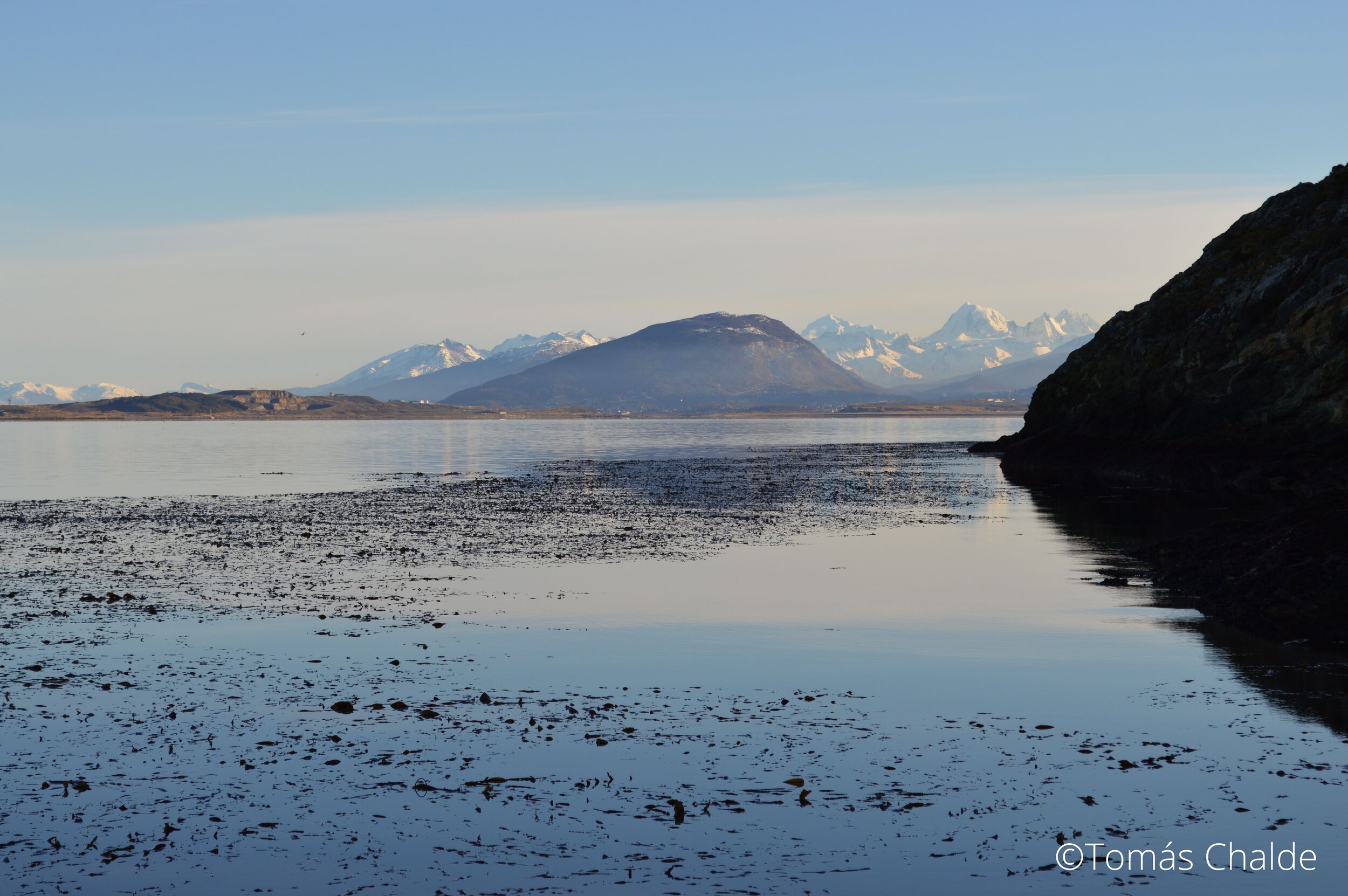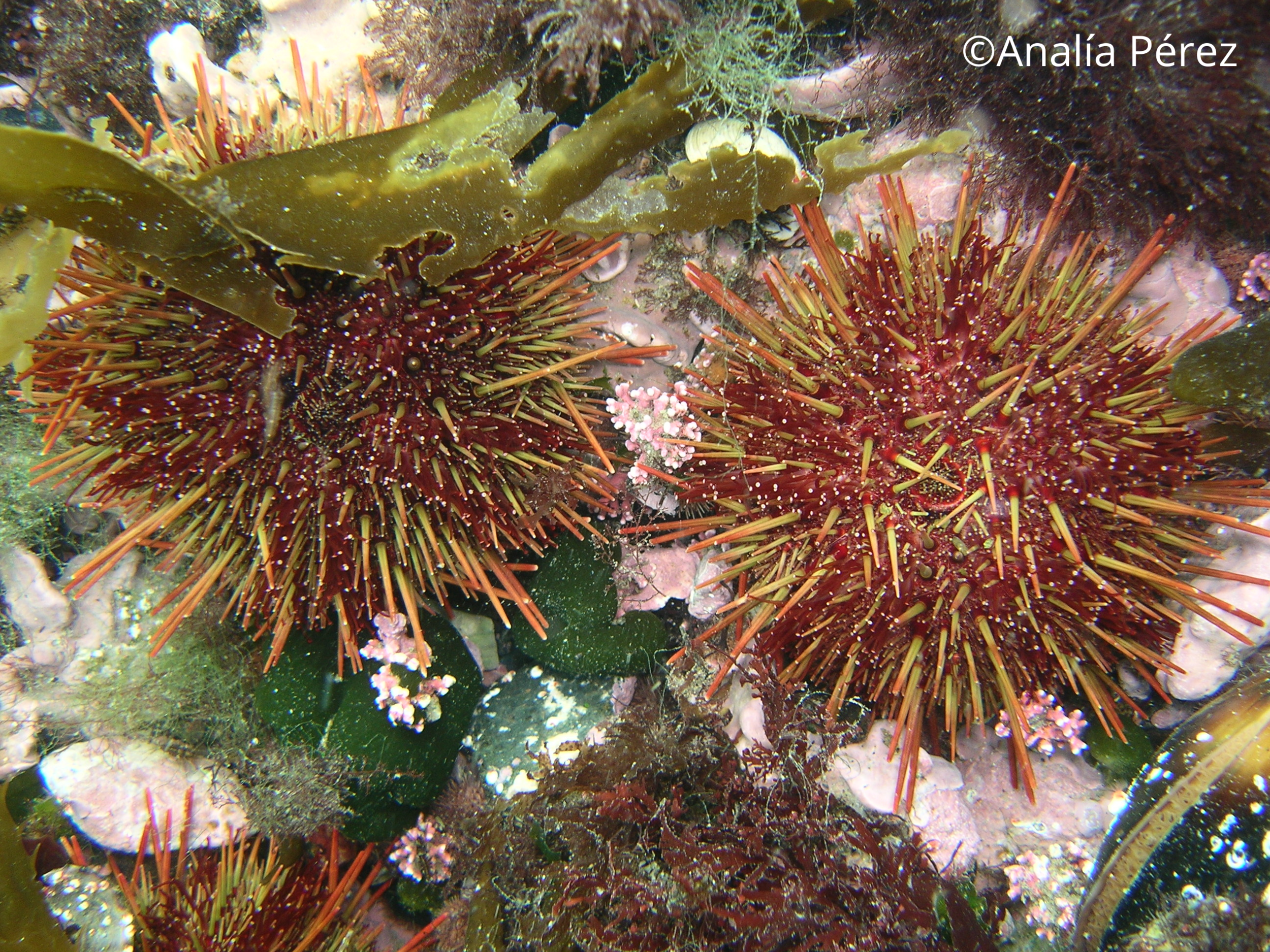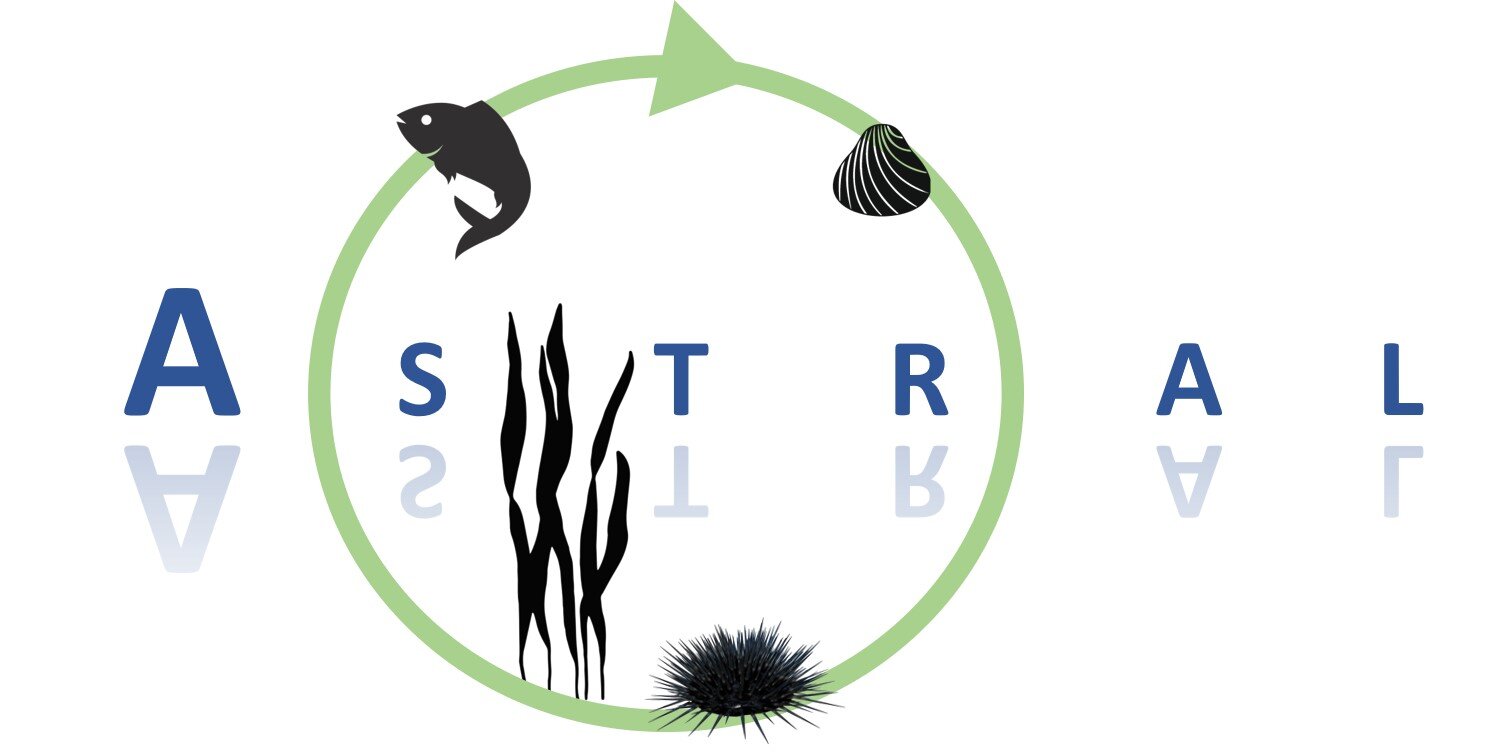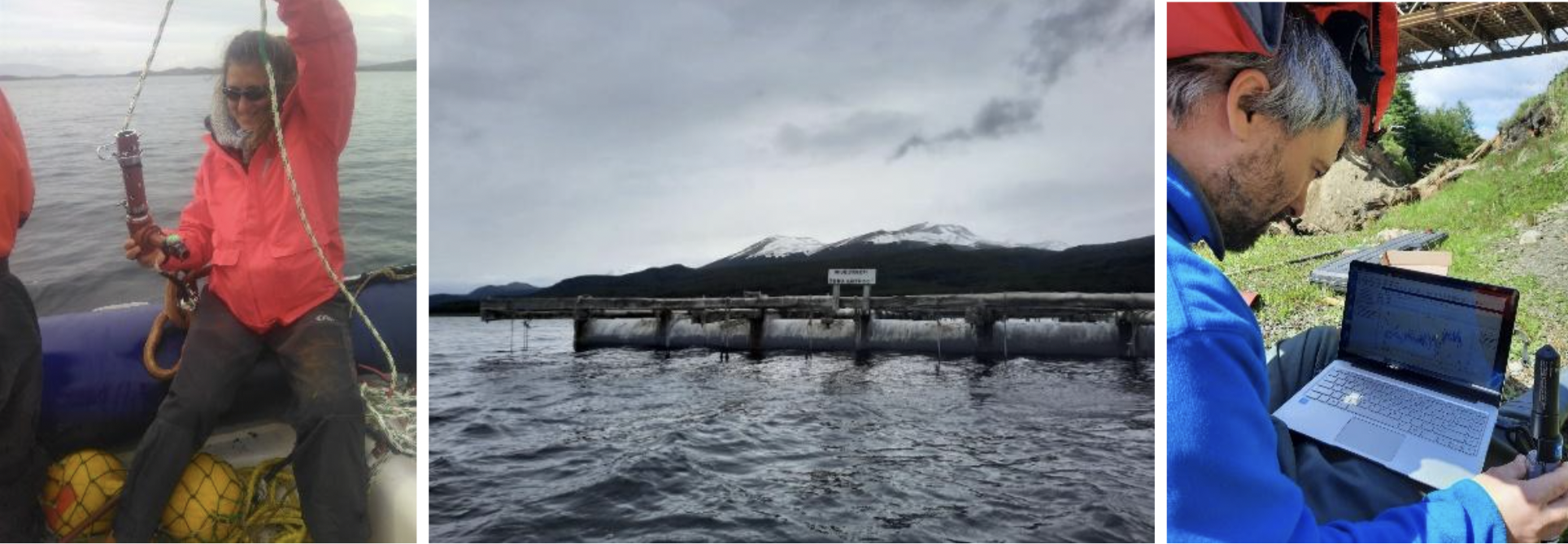Prospective IMTA Lab
CONICET
The Beagle Channel is considered a pristine environment, with low anthropic activities, concentrated in only 3 points: Ushuaia city (Argentina, 75,000 inhabitants that can double due to tourists’ affluence), Puerto Williams city (Chile, 5,000 inhabitants) and Puerto Almanza, a small village of artisanal fishermen (Argentina, 100 inhabitants).
The average water temperature of the Beagle Channel is around 7ºC, reaching maximum values of 10ºC in January-February and minimum values of 3ºC between July and August. Salinity reaches higher values in July (31-35 gr/l) decreasing in spring-summer as a consequence of the thaw and the contribution of fresh water from the rivers that flow into the Channel.
The tidal regime of the Beagle Channel is defined as semi-diurnal with diurnal inequality. This means that there are two vertical displacements of water masses per day, with a large difference between the heights of the two high and low tides of each day.
The sea-bottom depth in the centre of the Channel varies abruptly from -200 m to the appearance of archipelagos with small islands.
Contact: Dr. Tomás Chalde
Email: tomaschalde@conicet.gov.ar
Location of site: The Beagle Channel, extreme south of South America (55ºS), between the Isla Grande de Tierra del Fuego (Northern limit; Argentina and Chile) and the Navarino and Hoste Islands (Southern limit; Chile). It extends from East to West with an approximate length of 200 km long, and 5 km wide, connecting the Atlantic and Pacific Oceans.
Bahía Brown and Punta Paraná, near Port Almanza, are the areas allowed for aquaculture in the Beagle Channel and the place for develop a prospective IMTA



Species on site
There are currently no aquaculture producers in the area, except for one farmer growing rainbow trout at an artisanal scale. Nevertheless, in past years there have been several aquaculture initiatives focused on mussel production, reaching about 50 tn/year. Since the end of 2021, a local company started with the first works aimed at developing large-scale blue mussel aquaculture in long lines.
Description of IMTA process:
ASTRAL will be the first project to deliver knowledge and capacity to design IMTA in Argentina (Beagle Channel) since no previous IMTA experiences exist in this emerging market.
Main research questions
The prospective IMTA Lab in Argentina aims to discover the strengths, weaknesses, opportunities and threats of each local species (including fish, crustaceans, molluscs, and algae) to be used in an IMTA system. Some of our specific questions and actions are:
1. What are the conditions and characteristics of each species (biological, economic, environmental impact, social acceptance, market, etc.) that should be considered to define the potential of each species to be used in an IMTA?
2. Which is the best IMTA system (open – inland – semi-closed) to be used in the Beagle Channel?
3. What areas of the Beagle Channel have the best conditions to install an IMTA?
4. Determine and describe the fluctuations of the environmental parameters of the Beagle Channel that allow us to plan and predict the behaviour of a prospective IMTA system.
5. To promote the development of the IMTA in Argentina, publicize the circularity of this system and boost the society to consume these types of products.
Photo Credits: CONICET






